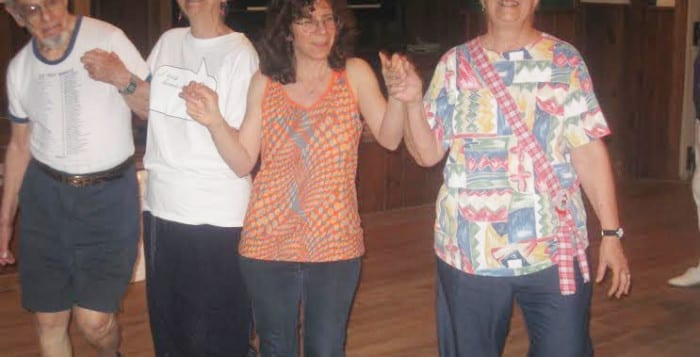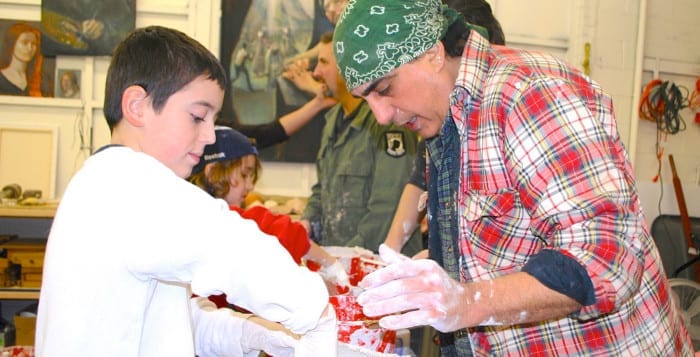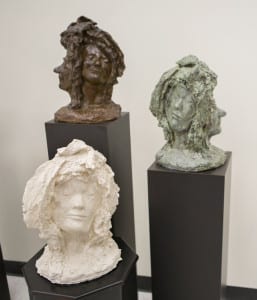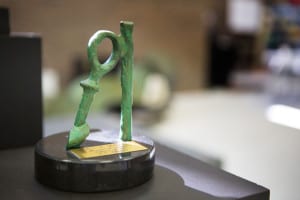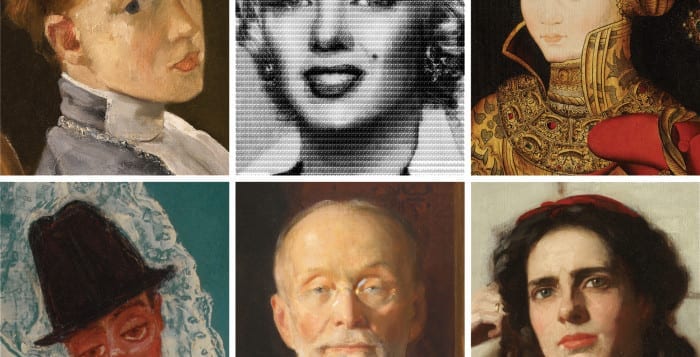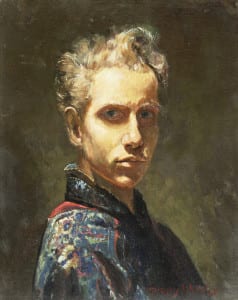By Rita J. Egan
During the evening of the first night of the week, while many are wrapping up their weekends, the Sunday Nite Folk Dancers are kicking up their heels at the Smithtown Historical Society’s Frank Brush Barn. The welcoming group continues the teachings of leading 20th century folk dance teachers Mary Ann and Michael Herman as well as celebrates a tradition that has brought communities together for centuries.
Long-time member Lou Goold, who has been dancing with the group since 1985, said the members follow the folk dance program that the Hermans debuted at the 1939 New York World’s Fair. The couple started Folk Dance House in Manhattan, and in the 1970s, after the group changed locations a couple of times in the city, they moved to North Babylon. The Hermans began leading their folk dance classes in Bay Shore and West Islip. After the passing of the couple in the mid-90s, and several years of the dancers meeting in Bay Shore, the group brought their love for folk dancing to Smithtown.
Goold said there are approximately a dozen or more members on any Sunday night who are more than happy to help newcomers learn the 15 or 20 dances a night. He said dance leader Ching-Hui Wu teaches twice a month. On other nights, called co-ops, the members take turns showing their fellow dancers their favorite numbers. “That’s a lot of fun, because we have cooperation. If one person forgets a dance or something like that, somebody else will help them out. So, it’s a very friendly group,” Goold said.
Margaret Foster, a member since the 90s, said she has enjoyed the variety of teachers throughout the years who have shared their specialties. Besides dances from America, there are also pieces from Scotland, Scandinavia, Israel, Bulgaria and other countries. “We enjoy learning something about the dances and the culture of the different places,” Foster said.
Goold said that helping people understand other ethnic groups through dance was a mission of the Hermans. Their motto was: “You can’t hate people when you’re doing their dances.”
Juanita Wetherell, who joined the group about 20 years ago, said she took a few years off to take care of family members. When she returned to the group, she was looking forward to dancing again but was doubtful she could remember the steps.
“When I first came back, I was thinking, ‘I haven’t danced in so long. I’m not going to remember any of the steps. I’m going to be the newbie all over again.’ Yet, I remembered somebody saying, ‘you listen to the music and your feet are going to know what to do’. And, you know, that’s pretty much what happened. The music tells you,” Wetherell said.
Her return reminded the dancer of her early days, when she was confused about rhythms and patterns.
Wetherell said Goold’s wife Kathy, a former dance leader, would sit her down next to her and just show her the footwork. The dancer said learning the steps first while sitting made it easier once she joined other dancers on the floor.
Foster said the leaders go over the sequences, so those who have never folk danced before can easily learn.
“You can come and learn as you go, and you’ll enjoy doing what you can and then you’ll learn more. You’ll start getting used to it next time. It’s the sort of thing that grows on you,” the group member said.
Ziggie Wielunski, a former dance leader, and his wife Alice have been dancing since 1947 and have been members of the Sunday Nite Folk Dancers since the group started meeting on the South Shore. Ziggie explained that folk dances are not that intricate, so anyone interested should come to the barn and try out the dances. Alice added, “The important thing is not to give up after the first time, but to come for a number of times, and you’ll find each time it’s easier and easier.”
The Sunday Nite Folk Dancers meet every Sunday from 7:30 to 9:30 p.m., except the third Sunday of July and the month of August, at the Smithtown Historical Society Frank Brush Barn located at 211 Main Street in Smithtown. The fee is $8 and no partner is needed. All ages and dance levels are welcomed. For more information, call 516-781-3552 or 631-589-4203.

